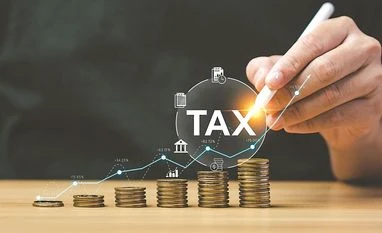As a new financial year begins, expect your employer to reach out to you regarding choosing a tax regime for 2024-25, if they have not already. This decision is crucial. The choice of tax regime dictates how your income will be taxed. If you don’t make the right pick, you might end up losing money.
“The new tax regime has become the default tax regime for individuals after the Finance Act, 2023, from the financial year 2023–24 onwards,” says SR Patnaik, partner, Cyril Amarchand Mangaldas.
The new regime
The new tax regime offers lower tax rates but with fewer deductions and exemptions. Here, taxpayers cannot claim various popular deductions under Sections 80C, 80D and 24. However, some deductions, such as standard deduction and family pension (those receiving a family pension can claim a deduction of Rs 15,000 or one-third of the pension, whichever is lower) remain available. “This regime simplifies the tax structure and reduces the tax burden for many, especially those who do not have significant deductions under the old regime,” says Suresh Surana, founder of RSM India.
The benefit of a rebate under Section 87A is available to resident individuals opting for the new regime.
The maximum rate of surcharge is 25 per cent for taxpayers opting for the new tax regime, compared to the highest rate of 37 per cent applicable to taxpayers opting for the old regime.
More From This Section
Old regime: Who should stick to it
Under the old regime, taxpayers can avail of various deductions and exemptions, such as those under Section 80C, 80D, house rent allowance, and the like, which can significantly reduce their taxable income. “The old regime follows a system that taxpayers are accustomed to, with well-established rules and procedures. For taxpayers with significant investments and expenses eligible for deductions, the old regime may result in lower tax liabilities compared to the new regime,” says Amit Bansal, partner, direct tax at Singhania & Co.
New tax regime: Is it for you?
The decision to opt for the new tax regime will depend on the amount of exemptions and deductions an assessee can avail of.
“This regime would be more suitable for young taxpayers as they do not have any historical claims. They will be able to pay taxes at lower slab rates under the new regime,” says Patnaik. Individuals with income above Rs 7 lakh need to estimate their tax liability under the old regime after claiming deductions, and compare it with their tax liability under the new regime without the available deductions. “They can then go for whichever regime requires them to pay lower tax,” says Patnaik.
Factor in breakeven point
The breakeven point is the amount where there is no difference in tax liability between the two regimes. “We calculated the breakeven points for different situations to help taxpayers determine which option is more beneficial. For example, if an individual has no deductions available under the old tax regime, it would always be more beneficial for them to opt for the new tax regime,” says Naveen Wadhwa, vice president, research and advisory, Taxmann.
Likewise, if a taxpayer avails of only Section 80C deduction, it would be beneficial for them to opt for the new tax regime. “If you avail deductions under both sections 80C and 80D, then the breakeven point is Rs 8,25,000. It would be beneficial to opt for the new tax regime under Section 115BAC only if you have an income above this breakeven point,” says Wadhwa. If you avail of deductions under Section 80C, Section 80D and Section 24 (interest on housing loans), you should never go for the new tax regime.
Switching option
Those with professional or business income can switch between the two regimes only once during their lifetime. Others can switch regimes yearly. “To switch back to the old tax regime, submit Form 10-IEA while filing the tax return,” says Archit Gupta, chief executive officer, ClearTax. You can switch between regimes even at the time of filing your return.
)